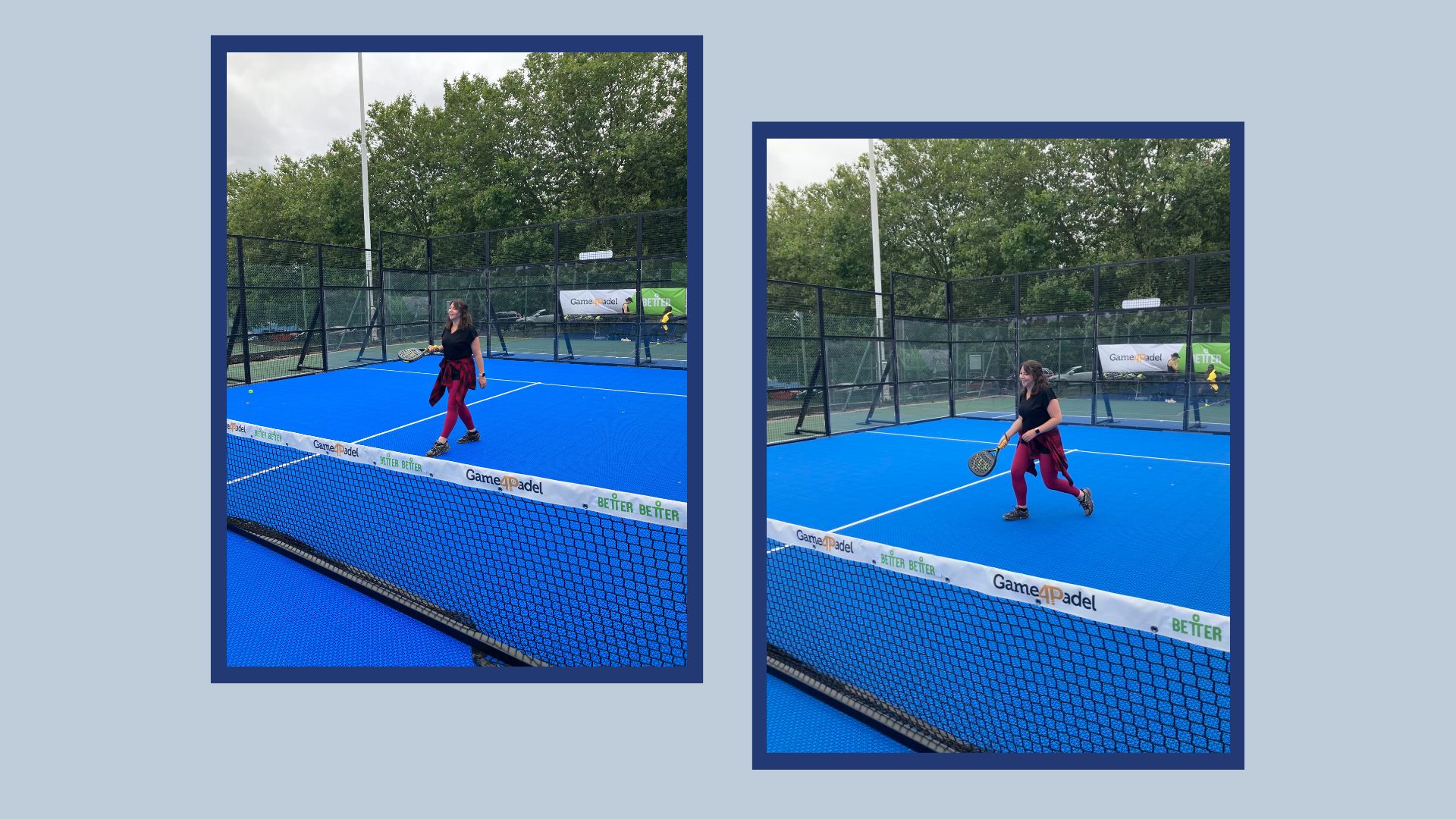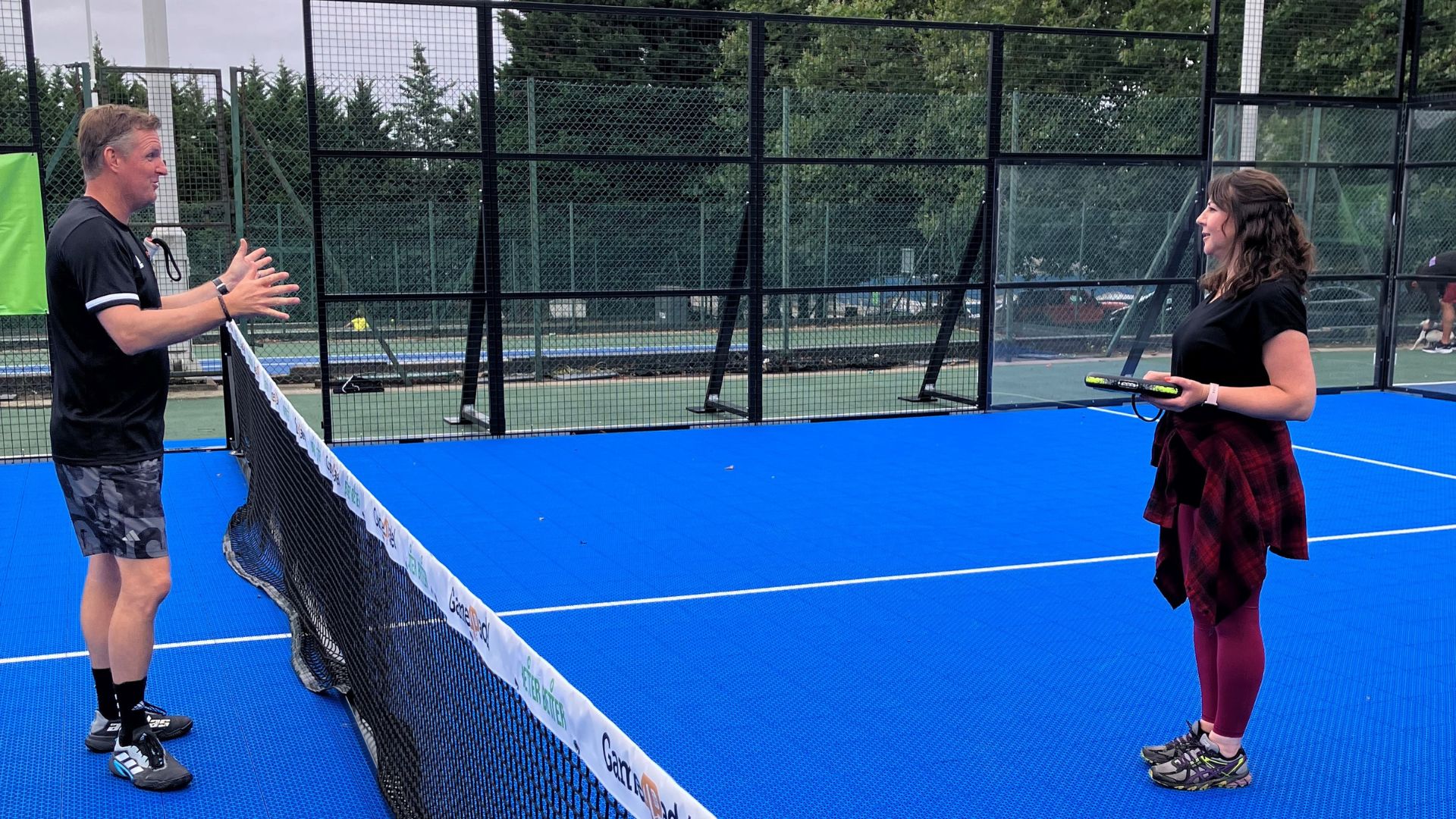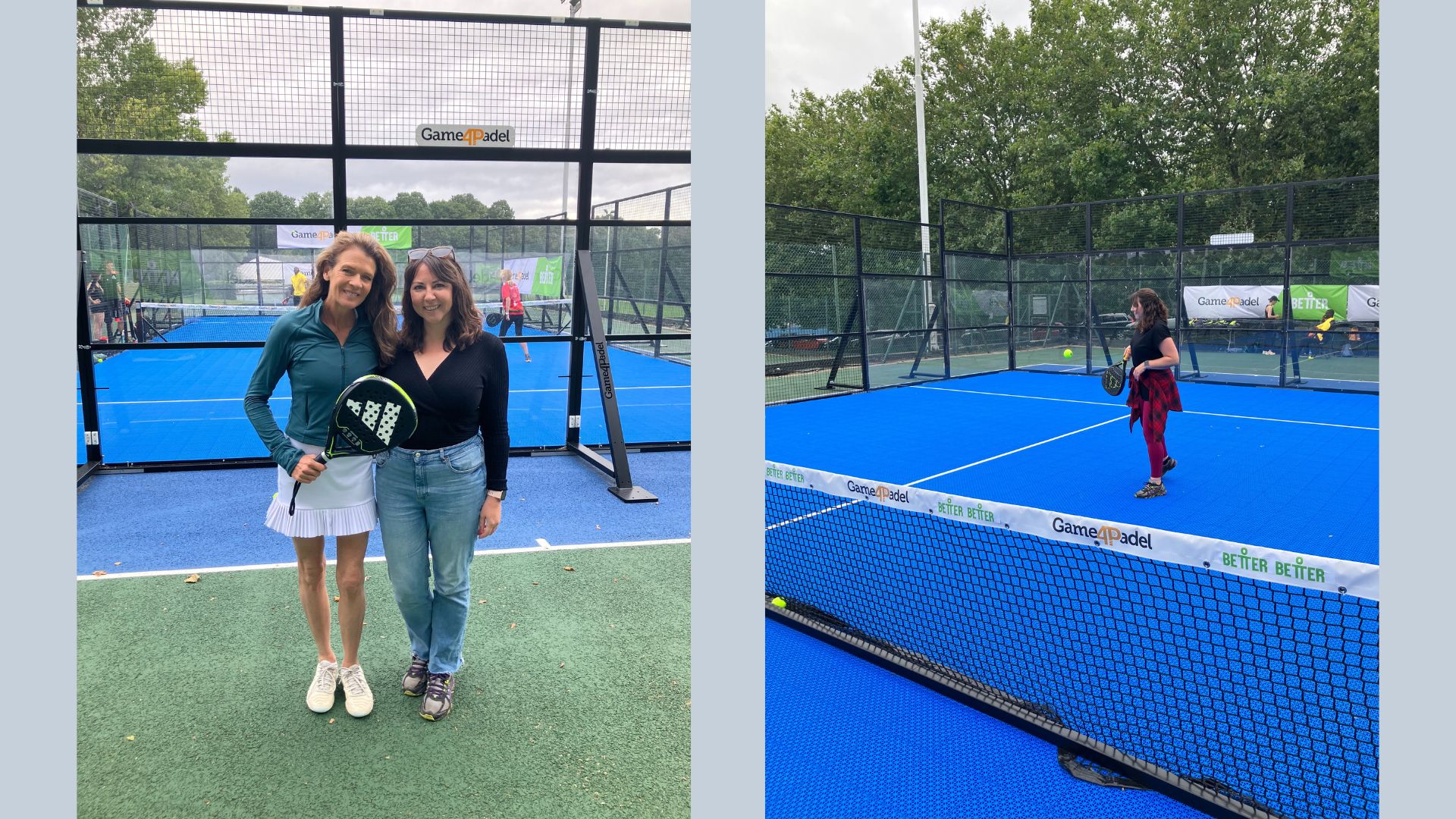I tried Padel for the first time - here's my honest take on the global trend
Padel for beginners might be one of the world's most popular sports but it's still a workout, as novice player Susan Griffin discovered after one session


Padel, also sometimes known as padel tennis, might be one of the most popular sports in the world by this point - but I hadn't picked up a racquet of any kind in 30 years when I agreed to a lesson in padel for beginners, so it's fair to say I approached the session with a little trepidation. However, I left the court with a totally different mindset towards the sport, a confidence boost, and a desire to go back and play again as soon as possible.
I'd actually never heard of padel when I received an invitation to the launch of new courts at Crystal Palace National Sports Centre in south London, so I thought it would be best to do a little research before signing up. It didn't take long to discover that padel (pronounced 'paddle') is one of the fastest-growing sports with over 20 million players worldwide. In Spain, it's the second most popular sport after football.
Celebrity fans are said to include Prince William, David Beckham and Serena Williams and although it is not an Olympic sport yet, it's now recognised as an international sport by the International Olympic Committee.
As I know now, the great appeal of padel is that it is accessible to everyone, whatever your age or ability - much like pickleball for beginners. All you need are running shoes (and a good sports bra), tennis balls, a padel bat, and access to an enclosed padel court, which is typically surrounded by glass walls or metal mesh and separated by a net. Here's what happened when I picked up a racket for myself and played padel for beginners.
What I learnt playing padel for beginners
1. You won't be confused by the rules
As I make my way onto the outdoor padel court, I am introduced to James Rose, the man who is tasked with teaching me the basics. A former director of tennis coaching at the celebrated La Manga Club Resort in Spain, he is passionate about the sport.
“The scoring is the same as tennis (15-30-40, deuce at 40-40 etc), with the aim to win sets (best of three sets with one set up to six games), but is not as intimidating as tennis can seem and it is easy to learn. My wife loves it, too, unlike tennis,” he says.
As with squash, you can bounce the ball off walls and it is fast-paced but it is not as frenzied, and while there are comparisons to tennis, a padel court is a third of the size of a tennis court. I admit that this was probably a pivotal factor in deciding to give padel a go.
Sign up to our free daily email for the latest royal and entertainment news, interesting opinion, expert advice on styling and beauty trends, and no-nonsense guides to the health and wellness questions you want answered.
How to play padel:
- During the serve: You have two chances to serve while standing behind the service line. You need to bounce the ball and hit it when it is at or below waist level into the diagonal service box on your opponent's side. The ball must bounce in your opponent’s service box and not hit the fencing after the bounce.
- During serve and play: The ball must always hit the ground before hitting the back or side walls. If it fails to cross the net or hits the wall on the opponent’s side without bouncing off the ground, the pair who hit the ball loses a point.
- During play: You can use the entire side of your court and return the ball with a volley, after one bounce or by hitting it to your opponent’s side by utilising the wall on your side of the court. After hitting the floor, the ball is allowed to bounce off one or more of the walls as long as it is returned before it bounces twice.
Reading this, I am aware it might sound a little complicated. Really, the best way to way to learn is to have a go. From my own experience, you’ll have the basics down within an hour and over time, you can work on your finesse.
2. Padel is very different to tennis
I begin my session by getting to grips with the padel bat, which has a short handle and is chunkier to hold than a tennis racquet. In fact, it seems almost toy-like, which is probably why it is easier than I thought it would be to hit a ball.
My technique leaves a lot to be desired: my left arm refuses to unfurl from an awkward hooked angle and my feet are uncoordinated. But somehow, I managed to hit the ball over the net using forearm plays and even a bit of backhand. It is a confidence boost in itself.
Typically, I would be playing with a partner, but as this is an introduction to padel, it is just Rose and I, which is a great way to get a feel for the game as a beginner.
What strikes me is, unlike tennis, you only use underarm plays and because there is less space to run around, it makes it more likely you’ll reach the ball to return it to your opponent. You also spend less time trying to gather all the strewn balls at the end of a rally.

Susan and James Rose played padel for beginners on courts in Crystal Palace, London.
3. You'll be sweating soon enough
The padel court might be smaller than a tennis court, but you can expect to be running about a lot, from the back of the court to the net, and because there is less space, the ball is naturally going back and forth quicker. It means the game can be fast-paced when you get going.
Similar to doing cycling as a workout, running as a beginner, and other aerobic sports, you can expect to burn in the region of 500 calories an hour playing padel.
“Padel provides good cardiovascular exercise, so you will definitely get your heart rate up and find you sweat quite quickly. Like tennis, you are using footwork skills and lots of muscles, so it will help you to improve your balance and agility. It is also relatively low impact, which is why it is popular with mature women,” says Croft.
Personally, I can vouch padel provides a full body workout, but between running, bending, leaping and reaching, you forget you are exercising - which is a necessity in my mind and how I feel about hiking.
4. Padel is lighthearted fun
Whereas tennis can seem austere with all-white clothing, hushed courts and exclusive clubs, padel is about getting together with your friends and family and having a laugh.
It's an idea that former British No. 1 tennis player Annabel Croft can certainly relate to, having recently become an ambassador for the sport. "I fell in love with padel instantly. It's easier than tennis, which has a lot of elements to it. Plus, it is very inclusive. With padel, you can start to get rallies quite quickly and it is such a fun game. I laugh a lot when I play padel,” says Croft, 57, who works with Game4Padel.
"Every single person I've taken onto a padel court, no matter what their ability, has picked up padel quickly. I think people surprise themselves by how much they enjoy it."
On more than one occasion, early on in our session, Rose reminded me it is okay to smile. I blame my focus for the serious frown. That, and trying my best not to make a fool of myself, as I am so far out of my comfort zone. But as time passes, I begin to relax and just enjoy myself. It is no wonder the courts are filled with the sound of laughter. Padel is a sport that doesn’t take itself too seriously.
5. It's a workout for the mind too
"Generally speaking, racquet sports (like tennis and pickleball) are considered to be of benefit as we age, as they keep you fit mentally and physically," says Croft.
"The scoring, social interaction, strategizing and hand-eye co-ordination are all great at keeping your mind busy. Plus, it’s nice to be able to switch off from the stresses of life, do something healthy and get your brain engaged in something different."
It's acknowledged that regular physical activity can reduce cognitive decline, including dementia. One study by the Centers for Disease Control and Prevention, for instance, highlights that "cognitive decline is almost twice as common among adults who are inactive compared to those who are active".
I haven’t played tennis for three decades and, of course, padel is completely new so I could literally feel the cogs turning when trying to remember how to stand, serve and play, as well as where to run. As a beginner, padel requires real concentration, but as challenging as it was at times, it provided a sense of satisfaction and achievement when it all came together.

(left) Susan standing with Annabel Croft, a former tennis player, and (right) playing Padel for beginners.
What are the origins of padel?
Padel was invented in 1969 in Acapulco, Mexico by a man named Enrique Corcuera. During the 1970s, it was introduced in Spain and Argentina. According to the International Padel Federation (FIP), which was formed in 1991, there are now over 25 million people playing padel in over 90 countries.
"Padel has taken Latin America and Europe by storm, particularly Spain where it has become a part of the cultural fabric (it’s the second most popular sport after football),” says Ruben Gonzales Chapa, partner and regional manager of COPA Padel Club in Texas, the same city where the first US padel court was constructed in 1993.
"Padel is beginning to take its fair share of the market in North America with courts popping up in cities, such as Miami, New York and Texas," he notes.
Padel vs pickleball
- Equipment: Padel is played with solid paddles and depressurized balls within an enclosed court, whereas pickleball uses a perforated plastic ball and composite paddles, taking place on a court that mirrors a badminton court.
- Gameplay: The sport is typically played as a doubles game that incorporates wall play like squash. Pickleball, on the other hand, can be enjoyed in a singles or doubles format - excluding any interaction with walls.
- Activity: For those looking to burn calories while having fun, padel may be the sport of choice. It's larger in court size and faster-paced, making it a more physically engaging game and offering an intense workout.
- Accessibility: The appeal of both sports extends beyond their gameplay. They are highly accessible and suitable for all ages, promoting social interaction and physical fitness.
A journalist with two decades of experience, Susan interviewed A-list names in film and TV before going freelance and focusing on health, wellbeing, and lifestyle features. She has since spoken to world-renowned experts on the most innovative and effective ways to look after your mind and body; her work appearing in publications such as Daily Express, Daily Mirror, Metro, Fabulous and The Telegraph. When Susan isn’t working on her laptop, she is most content hiking in the Peak District or finding quiet camping spots to while away a weekend and knows first-hand the restorative benefits of being outdoors.
